Reviews
Roger Corman
USA, 1959
Credits
Review by Jonathan Foltz
Posted on 25 October 2013
Source YouTube
Categories 31 Days of Horror X
I will talk to you of art, for there is nothing else to talk about. For there is nothing else…
—the poet, Maxwell Brock, in A Bucket of Blood
The philosopher and cultural critic Theodor Adorno once observed the truism that artworks are intrinsically melancholy, since they must “kill what they objectify by tearing it away from the immediacy of its life.” I doubt Adorno would have realized at the time that he was describing the theme for a zero-budget horror movie, but he should have. The morbid sensibility that links beauty to death is a limp cliché of gothic sublimity (stretching back at least to Poe’s oval portrait and Wilde’s Dorian Gray). But the real value of such clichés - known to all practitioners of camp genres like horror film - lies in their corrosive ability to deprive conventional ideas of their cumbrous solemnity, allowing us to enjoy them once more in the air of the unserious. Roger Corman’s early triumph,A Bucket of Blood, is full of the giddy energy of travestied aesthetic theory, presenting a gruesome satire of beatnik hipsterism that scorns the romance of being an “Artist” simply by showing the absurdity, and the menace, of taking art seriously to begin with.
In the inadvertent murderousness of the film’s busboy/aspiring sculptor, Walter Paisely - who only finds success by covering real corpses with his clay and displaying them as his “creations” - Corman discovers a way to revel in the aggression, competitiveness, and bad faith at the heart of the desire to turn art into a way of life. Walter is a humiliated outsider, a talentless wannabe in a subculture where only being an artist has any meaning. “What is not creation is graham crackers,” intones the wonderfully goofy beat poet, Maxwell Brock, in the film’s captivating opening, over a trill of wandering saxophone notes, “let it all crumble to feed the creator! The artist is; all others are not!” Rather than dismiss this haughty bohemianism outright, however, A Bucket of Blood embraces the farcical self-importance that artists imagine for themselves, suggesting that art’s fetishistic insularity from the real world is at once more interesting, more destructive, and more fun. It’s not that art is shown to be hollow in the film - Walter’s sculptures are conspicuously stuffed with his collection of dead bodies - but when the patina of clay begins to wear off in the final sequence, revealing the mummified limbs and fingernails that their beautiful lining had previously kept at bay, A Bucket of Blood delights in the shudders of disgust on the faces of all those priests of good taste who never expected to see their ideas of beauty and creative power made so devastatingly literal.
Corman famously shot the film in only five days (Little Shop of Horrors was filmed in two!) and the traces of its production schedule are visible in the film’s dramatic claustrophobia. An economy of sets limits the action to two principal locations. The first is the cavernous interior of the beatnik café, called The Yellow Door, where Walter works as a busboy. The café is constantly crowded, cluttered with paintings and sculptures, musicians, poets, groupies, and scenesters. The film’s opening sequence languishes on the space during a series of mobile dolly-shots that follow Walter as he moves from table to table. We start again at each cut with the mouth of Max, the poet, who gives the café (and the film as well) a baptism of words into the church of art, while a dejected Walter circles its periphery. “Life is an obscure hobo,” Max lets loose at one point, in a line of poetry that Walter will later repeat verbatim, “hitching a ride on the omnibus of art.” Max might have willed this space into being, so perfectly does it seem to conform to his hackneyed vision of artistic significance. Even so, Corman portrays the space not only as a haven for artists but as a kind of cultural stage where bohemianism is relentlessly commodified and put on display. We follow a wealthy middle-age couple as they sit down near Max’s performance, eager to be seeing some “real artists” firsthand. We are also introduced to a stubbly man in a bathrobe and a cowboy hat, who turns out to be an undercover vice squad officer, keeping the café under surveillance for drug activity. In this way, Corman turns the café into a spiderweb of crossed glances, each with their own agenda and interest. The most present of these belongs to Leonard, the café’s owner, who perches in a corner of the bar surveying its expanse, but whose sole interest seems to be in nagging Walter to get back to work. In a way, the budgetary constraint which keeps all of this scrutiny and diverging action centered on the café is important because it reinforces Max’s chimerical belief that art is the only cultural act worth undertaking. The café’s self-enclosed world lends this proposition a credibility that expansive social realism could not provide, allowing us to understand why Walter - whose drab and empty apartment is almost the only other space we get to see in detail - might feel driven to kill in order to be accepted within it.
Walter’s first victim is the result of an accident, of course. With his head full of Max’s ideas about art, and with the intention of creating a masterpiece to help him woo Carla, Leonard’s kind hearted intellectual girlfriend, Walter stumbles home to his block of clay to continue his clumsy attempts at expression. Corman lets us see that Walter is not some misunderstood genius, whose menial position at the café prevents him from being recognized: his work is incomprehensibly bad, no matter authentically he feels the need to be an artist. “Be a nose! Come on, be a nose!” he pleads above a block of clay hastily mashed together to look like a vaguely smiling oval of bean dip. But when he decides to try to rescue his landlady’s cat from behind the walls (where, somehow, it has found a way to get trapped), Walter realizes that he has accidentally impaled it on his knife. Not knowing what to do with the corpse, and partially feeling that since the creature is already dead he may as well put it to use, Walter decides to cover the cat with clay (leaving the knife in!). “Repetition is death, Frankie,” Walter says, speaking to the recently deceased cat in words that he has memorized from Max. He gives his work a wonderfully literal, understated title: “Dead Cat.” Walter may indeed want to be an artist, but he has no imagination whatever, a trait that works perversely in his favor in a scene full of pretentious dilettantes. “Dead Cat” immediately catches Carla’s attention, who praises its precise anatomical detailing and astounding “realism.” Other patrons register a mix of dread and esteem, but either way Walter has been recognized as an artist. Indeed, one of the groupies becomes so charged with enthusiasm that she all but offers herself to Walter for the brilliance of his work. “Walter,” she says, “I want to be with you. You’re creative! You’ve got a hot light bulb burning inside of you and I want to be warmed by it!” All this proceeds as if the creation of art, any art, were the key to realizing Walter’s desires. The unreality of this wish-fulfillment is important, of course, since neither Walter nor we understands precisely how or why he has become a success. But when, in a fit of defensive rage, Walter accidentally kills the undercover cop who has come to question him, we know that he has become hooked for good, both on the habit of murder and the delirious fantasy that by turning these deaths into “sculptures” he could finally achieve the recognition he’s been craving. He calls his new work “Murdered Man.”
At least at the start of the film, Corman allows us to sympathize with Walter—a naïve and uncomprehending character surrounded by self-satisfied bohemians. His love of art is endearing precisely because he understands it so little. But this lack of understanding also lends his enthusiasm an aggressive, ugly quality, as though Walter had nothing to express but a blind will to revenge the world for forgetting him so long. What makes A Bucket of Blood work as a horror film, rather than just as a satire, is that the film takes seriously Walter’s grotesque transformation from meek likability to resentful and sexually domineering murderousness. When Carla rebuffs his advances late in the film, Walter throws a small tantrum and then - his puppy love turning on a dime to indignant rage - invites her over later to “do her sculpture.”
In this sense, A Bucket of Blood might be viewed as a manic, quirky hymn to anti-social ambition, a film that honors the rebarbative spirit of the avant-garde while presenting it as burlesque. Even the characters who seem to fit in this world are essentially loving caricatures: Leonard de Santis, with his beret and his cigarettes, is a left bank Bogart club owner; Maxwell Brock, with his artificial beard and barrel chest, looks like a beat-era send-up of Hemingway’s ghost. When Walter falls into some money from the sale of “Dead Cat,” he emerges the next day with a costume of his own: silk scarf, cigarette holder, bright striped jacket, and a new beret. He sits down and orders a slice of “papaya cheesecake” and a bottle of “Yugoslavian white wine.” This is bohemia portrayed by people who understood it well enough to nail the details. Oscar, a perpetually stoned patron of the Yellow Door, describes another sculpture he saw that reminds him of “Murdered Man”: “I saw a statue once; it was called “The Third Time Phyllis Saw Me She Exploded.” …It was made out of driftwood and dipped in fluoric acid. Ver-r-ry wild.” It is this detailed richness of the world at the Yellow Door café that makes A Bucket of Blood feel as surprising and rewarding as it does. As Walter Paisley grows increasingly distasteful in his obsessive drive to become deep and meaningful, the film tips its hand a love letter to the frivolousness of beat culture. In this way, it allegorizes what might be the lesson of much of Corman’s best work, that art is most powerful when it is most free to be ridiculous, and (like Walter’s kitschy art is said to be) at once “hideous and eloquent.”
More 31 Days of Horror X
-
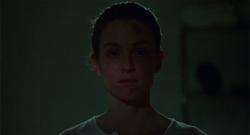
Safe
1995 -
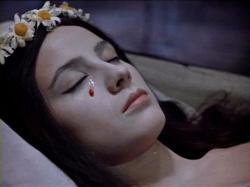
Viy
1967 -
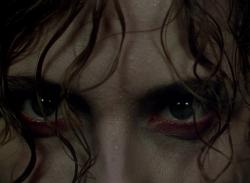
Black Narcissus
1947 -
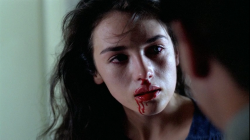
Possession
1981 -

Carrie
1976 -
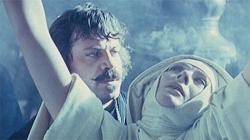
The Devils
1971 -
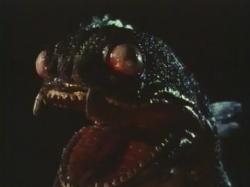
The Sea Serpent
1984 -
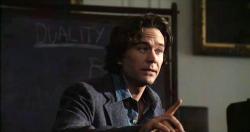
The Dark Half
1993 -
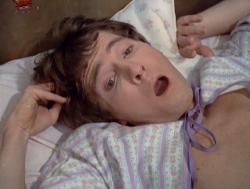
The Baby
1972 -
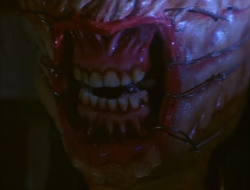
Hellraiser
1987 -
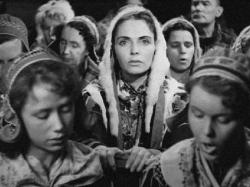
The White Reindeer
1952 -
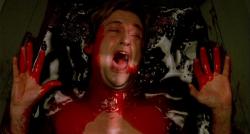
The Serpent and the Rainbow
1988 -
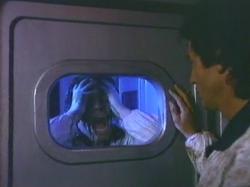
Endless Descent
1989 -
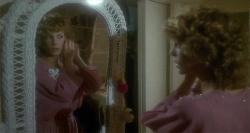
Prom Night
1980 -
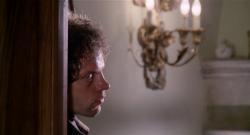
Night Train Murders
1975 -
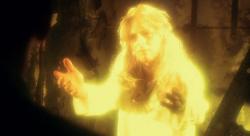
God Told Me To
1976 -
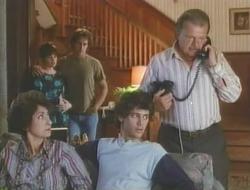
In a Child’s Name
1991 -
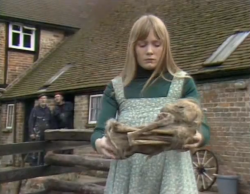
Beasts
1976 -
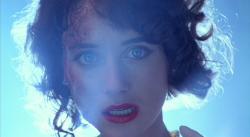
Prom Night II
1987 -
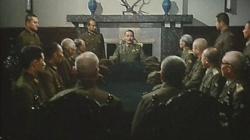
Men Behind the Sun
1986 -
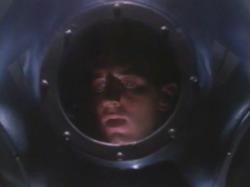
DeepStar Six
1989 -
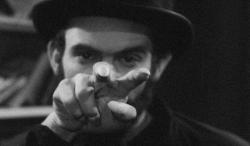
At Midnight I’ll Take Your Soul
1964 -
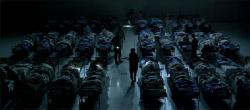
They Came Back
2004 -
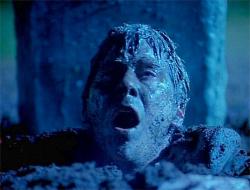
Buried Alive
1990 -
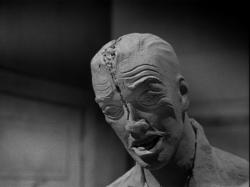
A Bucket of Blood
1959 -
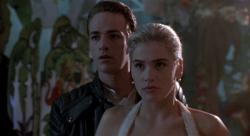
Buffy the Vampire Slayer
1992 -
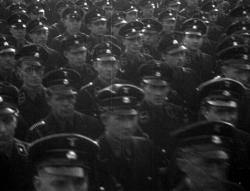
Night and Fog
1956 -

It Came From Beneath the Sea
1955 -
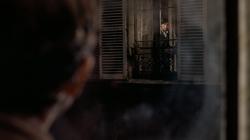
The Tenant
1976 -
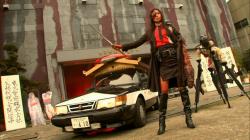
Tokyo Gore Police
2008 -
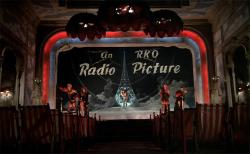
The Rocky Horror Picture Show
1975
We don’t do comments anymore, but you may contact us here or find us on Twitter or Facebook.



